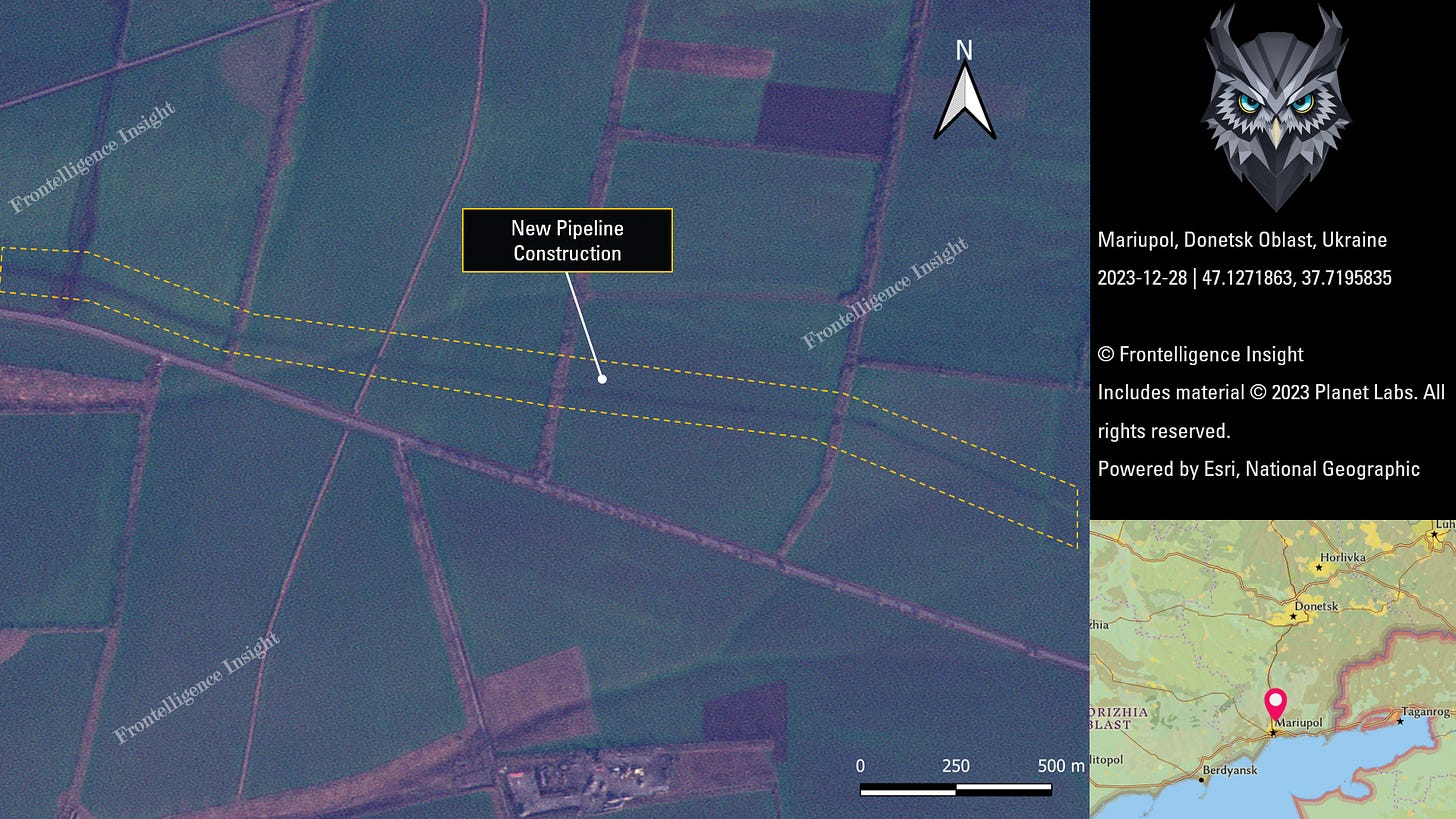Geospatial Analysis: Railroad Construction on Occupied Territories
From Taganrog to Crimea
Updated version: Includes corrected information about the pipeline and Mariupol railroad.
Effective logistics, crucial in any war, proved to be a key element in the early stages of the 2022 invasion. Logistic challenges hindered the Russian army's ability to achieve initial objectives and supply troops near Kyiv, Sumy, and Chernihiv. Logistics continued to be central during the successful Kherson counter-offensive in 2022 and the subsequent summer counter-offensive in 2023, where Ukrainian forces aimed to disrupt the land connection to Crimea by advancing towards the Melitopol area.
In early 2023, Russia invested substantial efforts in displacing Ukrainian forces from Vuhledar and the broader Volnovakha area to secure the Donetsk-Mariupol railroad, despite facing disastrous outcomes. This is driven by the understanding that rail transport remains the most efficient means for both sides to move units, ammunition, and equipment.
The Frontelligence Insight team analyzed satellite imagery of railroad constructions and believes that in 2024, Russians will improve railroad logistics in the occupied territories of Ukraine unless disruptions occur. There is an ongoing effort to establish a railroad connection between Taganrog and Crimea, through southern Ukraine.
Burne - Malovodne branch
To enhance logistics between Russia, Donetsk, and Mariupol, Russians are actively constructing a new railroad branch to the south of Donetsk.
This branch aims to bypass a risky section of the frontline near Mariinka and Vuhledar, thus helping to secure the transportation of resources from the rear areas of Donetsk Oblast to Mariupol and further.
The new branch starts in the village of Burne and links up with the existing railroad at Malovodne.
Based on satellite imagery, significant progress is evident in the construction of this railroad branch, making our team believe that it might be completed in 2024. However, comparative analysis highlights a slowdown due to the construction of a bridge over the Kal'mius River.
During the writing of this analysis, reports from the adviser to the Mariupol mayor indicated that Ukrainian forces had targeted the bridge while still under construction. Assuming the information is accurate, this would further delay the launch of the railroad. The vulnerability of this single point of failure to Ukrainian weaponry increases the likelihood of future strikes even after completion, impacting the functionality of the entire railroad branch.
Taganrog - Crimea Bridge
A more extensive and ambitious project has been announced by the Russians, to establish a connection between Crimea and the rest of Russia via a land bridge. This serves as an alternative route to the Crimean Bridge, aiming to reduce travel duration, as shown in an illustration released by Russian officials. The Frontelligence Insight team has identified what appears to be an early-stage construction of the railroad.
In contrast to the previously mentioned railroad between Burne and Malovodne, this railroad branch is much longer and is still in the very early stage of construction. Consequently, we assume that Russia won’t be able to complete this project by the end of 2024.
Sattelite imagery shows that Russians also successfully restored the gas pump station and are actively engaged in the installation of a gas pipeline intended between Mariupol and the broader continental region of Russia. The significant investment in infrastructure suggests that the Russians are intending to transform the region into a fortified frontline stronghold with a robust military presence.
This pipeline is likely a component of the Mariupol-Taganrog natural gas system.
Considering that the railroad project between Taganrog and Mariupol is in its early stages, it's very unlikely that the Russians will complete it soon. The section of the railroad between Burne and Molovodne, under construction since the middle of 2023, is not even halfway completed. Notably, this section is nearly ten times shorter than the one the Russians intend to build between Melitopol and Taganrog.
The successful completion of this railroad would decrease travel time and offer an additional route for connecting mainland Russian troops to the occupied territories in the south of Ukraine. This alternative route would circumvent the Crimean Bridge, thereby mitigating the risks associated with its destruction or damage.
Summary:
To effectively target railroad bridges, Ukraine would require more powerful missiles designed for bridge destruction, like the German Taurus missiles. Overall, Russia is anticipated to improve and expand its military infrastructure on occupied territories, consolidating its presence and heightening the difficulty for Ukrainian forces to liberate them. With Ukraine facing challenges such as ammunition shortages, undermanned units, and limited assistance from the West in 2024, a defensive approach will likely be adopted. Concurrently, Russian forces are expected to intensify their efforts in expanding and fortifying their military infrastructure.











Great insight; thank you. Take a look at Mick Ryan’s assessment at Future Doctrine on ‘Positional’ warfare as a legitimate means of war in these circumstances giving Ukraine an opportunity to restock, rearm, retrain and mobilise further.
Excellent analysis!